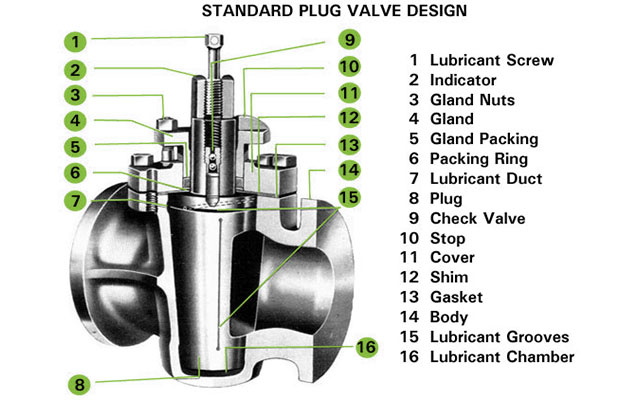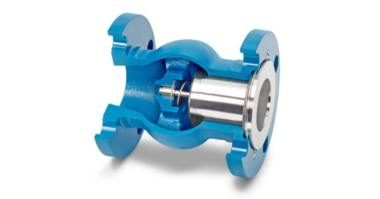What is a plug valve?
Shaped like a cone or cylinder, a plug valve uses a rotating plug inside the body of a valve to control fluid flow (see the image above). These types of valves have one or more horizontal passageways to allow flow through the valve when open. Plug valves are often used to move liquids or gases, but rarely if ever used to move solids. They typically have two ports but can also have three or more depending on the application.
When are Plug Valves Used?
Plug valves are a type of flow control valve that allow the user to increase or decrease flow by rotating the handle or other similar operation. The user may have to adjust the valve to the desired flow rate, with the valve able to hold the flow rate consistently and reliably. Other popular flow control valves include needle and fine metering valves, but they generally have more moving parts than plug valves, which makes them more expensive and harder to maintain.
Plug valves are typically used in applications where flow must be controlled and changed on a regular basis and where the user must have access to the valve. Plug valves should not be used in applications where a constant, steady flow is required or where the valve does not need to be readily accessible.
Quarter-turn plug valves are the most common and involve a simple quarter turn on a handle to open and close the valve. They are economically priced and are commonly used for applications involving low-pressure throttle.
Plug Valve Media
As discussed previously, plug valves can be used to move liquids or gases. Perhaps the most important consideration when selecting a plug valve is knowing what type of media is to be moved. For example, in the pipeline industry, a globe valve uses a plug mechanism to control the flow of fluids. When using a double valve plug arrangement, internal pressure acts on both plugs to give pressure balance across the plugs. This results in a smoother operation in the valve and better process control. The operation and selection of this valve depends on process requirements.
When plug valves are well lubricated, they can also be used to handle abrasive or sluggish materials found in pipeline systems and dirty upstream applications. Lined with a viscosity improver such as amorphous or fumed silica along with a base oil, these valves have excellent sealing properties and reduce friction.
Non-lubricated plug valves, such as lift, fully lined, and elastomer-sleeved plug valves, can be used to move abrasive substances such as sulphur or hydrogen fluoride. These types of valves also work best for applications where media could be trapped or solidify, thereby jamming the valve.
Other media that can be moved by plug valves include:
- Neutral liquids, like oil and water
- Acidic and Alkaline (corrosive) liquids
- Slurry
- Neutral gases, such as steam and air
- Corrosive gases, including chlorine and acid vapors
To properly select a valve, you must first understand the function, then choose a type of valve to meet that function. In addition to knowing what type of media is being moved and what type of flow is desired, it is also essential to know other vital information before selecting a plug valve. This includes the configuration of your system, the size of the ports, how much media is being moved, desired life of the equipment, and more. As Mike Shorts, President of Triangle Fluid Controls Ltd., says, the best operation comes from “valves sized for the application, not the line.”





Comments